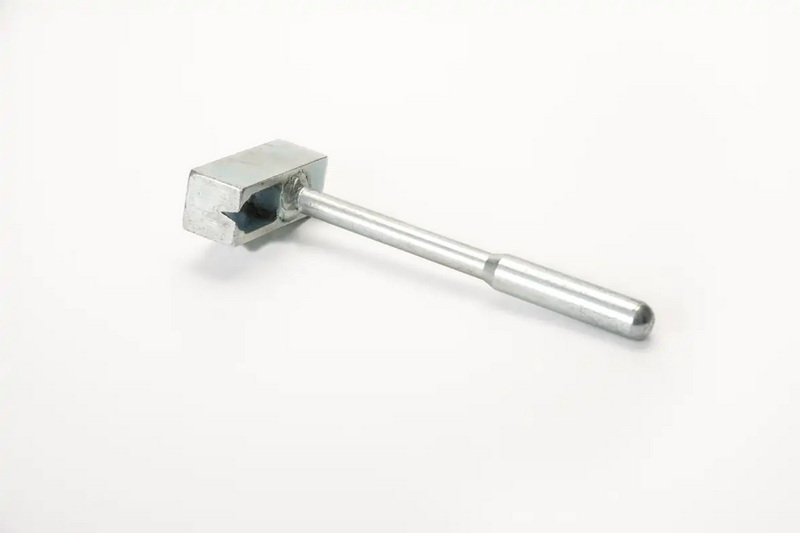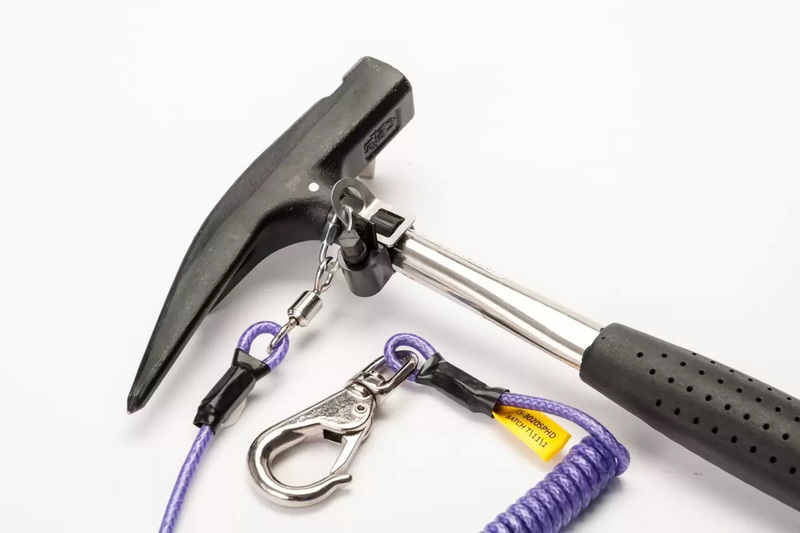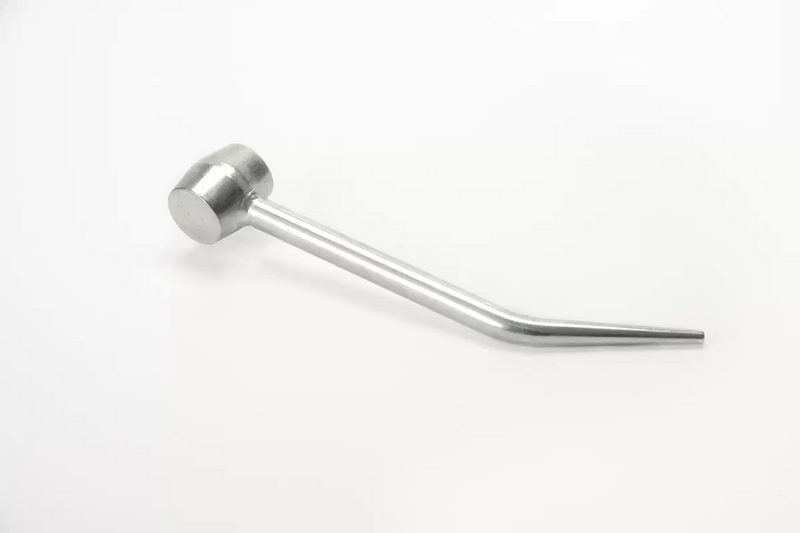Content Menu
● Understanding the System Scaffold Hammer
● Key Features to Look For in a System Scaffold Hammer
● Types of System Scaffold Hammers
● Prioritizing Safety
● The Importance of Proper Scaffold Erection and Use
● Conclusion
● FAQ
>> 1. What is a system scaffold hammer?
>> 2. Why do I need a system scaffold hammer?
>> 3. What are the different types of system scaffold hammers?
>> 4. What features should I look for in a system scaffold hammer?
>> 5. How can system scaffolding improve safety?
● Citations:
A system scaffold hammer is an essential tool for anyone working with system scaffolding. Designed to withstand the rigors of daily use in construction, this specialized hammer makes assembling, disassembling, and adjusting system scaffolds more efficient and safer. Knowing the top features to look for when choosing a system scaffold hammer can significantly impact your productivity and overall job site safety. This article delves into these key features, explaining why they matter and how to select the best system scaffold hammer for your needs.

Understanding the System Scaffold Hammer
Before exploring the top features, it's important to define what a system scaffold hammer is and how it differs from a regular hammer. A system scaffold hammer is a specialized construction tool designed specifically for use with system scaffold[1]. It's built to withstand heavy-duty tasks and typically features a larger head and longer handle compared to standard hammers, providing more power and leverage[1].
Key Features to Look For in a System Scaffold Hammer
1. Durability and Material
- High-Quality Steel Construction: A system scaffold hammer should be constructed from robust materials such as high-quality alloy steel to withstand repeated hammering without breaking or bending[1][5].
- Galvanized Finish: A galvanized finish can enhance the hammer's resistance to corrosion, ensuring longevity even in harsh working conditions[3].
- Heavy-Duty Head: For maximum impact and efficient driving of nails and securing scaffolding components, a heavy-duty head is crucial[1].
2. Ergonomic Handle
- Comfortable Grip: An ergonomic handle is essential for comfortable use, especially during extended periods[1]. Look for features like a ribbed, non-slip design to enhance grip and reduce fatigue[5].
- Shock Absorption: Handles that provide shock absorption can minimize strain on your arm and wrist, further enhancing comfort and reducing the risk of injury.
3. Optimal Weight and Balance
- Balanced Design: A well-balanced system scaffold hammer allows for better control and accuracy.
- Appropriate Weight: While a heavier head delivers more force, the overall weight should allow for comfortable handling. A weight of approximately 1.2 kg is generally considered suitable[5].
4. Specialized Features
- Nail Puller: A nail puller on one side of the hammer adds versatility, making it easier to disassemble scaffolding[3][7][8].
- Base Jack Collar Adjustment: Some system scaffold hammers feature a hole to accommodate system scaffold base jack collars, providing additional leverage when adjusting base jacks under load[3].
5. Head Design
- Large Head: The scaffold hammer's large head allows for better striking force distribution, making it easier to drive nails and secure scaffolding components firmly[1].
- Non-Marking Options: For tasks that require minimizing surface damage, non-marking system scaffold hammers are available[1].
Types of System Scaffold Hammers
Understanding the different types of system scaffold hammers can also help you choose the right tool for your specific needs[1]:
- Single-Ended Scaffold Hammer: Features a peen on one end and a driving face on the other, suitable for a wide range of scaffold construction tasks[1].
- Double-Ended Scaffold Hammer: Has a driving face on both ends, eliminating the need to flip or reposition the tool in confined spaces[1].

Prioritizing Safety
When selecting a system scaffold hammer, safety should be a primary concern:
- Guardrails: Ensure that the system scaffold itself has guardrails to prevent falls. OSHA standards require mid rails, top rails, and toe boards on all open sides above 10 feet[6].
- Load Capacity: Be aware of load limits. Standard duty scaffolding holds up to 75 pounds per square foot, while medium scaffolding holds 250 pounds per square foot, and heavy-duty scaffolding reaches 500 pounds per square foot, per OSHA[6].
- Regular Inspections: System Scaffolding allows for work area, tools, and scaffolding structure examination at frequent intervals to prevent hazards from going unnoticed[2]. Daily compliance checks for hazards are also much easier to conduct[2].
The Importance of Proper Scaffold Erection and Use
Using the right system scaffold hammer is just one aspect of ensuring safety and efficiency on a construction site. Proper scaffold erection and use are equally critical:
- Competent Person Supervision: Scaffolding must be erected, moved, or disassembled only under the supervision of competent persons[4].
- Firm Foundation: All scaffold legs require the use of a base plate and a mudsill or other adequate firm foundation[4].
- Regular Inspections: Scaffold plank must be inspected to see that it is graded as scaffold plank, is sound and in good condition, and inspected for saw cuts, cracks, notches, splits, delaminations and holes[4].
Conclusion
Choosing the right system scaffold hammer is vital for enhancing efficiency, safety, and overall productivity when working with system scaffold. By prioritizing features such as durability, ergonomic design, appropriate weight, and specialized functions like a nail puller, you can equip yourself with a tool that not only withstands the demands of the job but also minimizes strain and maximizes performance. Combined with proper scaffold erection techniques and adherence to safety guidelines, a high-quality system scaffold hammer is an indispensable asset for any construction professional.

FAQ
1. What is a system scaffold hammer?
A system scaffold hammer is a specialized construction tool designed for use in scaffolding projects, built to withstand heavy-duty tasks, and typically featuring a larger head and longer handle compared to regular hammers[1].
2. Why do I need a system scaffold hammer?
A system scaffold hammer is essential for securely attaching and adjusting scaffolding equipment, ensuring stability and safety during the construction process[1].
3. What are the different types of system scaffold hammers?
There are various types of system scaffold hammers available, including claw-end scaffold hammers, ratchet scaffold hammers, and serrated scaffold hammers. Each type offers unique features and benefits, so it's important to choose one that aligns with your specific needs[1].
4. What features should I look for in a system scaffold hammer?
Key features to look for include durability, an ergonomic handle, optimal weight and balance, and specialized functions like a nail puller[1][3][5].
5. How can system scaffolding improve safety?
System Scaffolding allows for work area, tools, and scaffolding structure examination at frequent intervals to prevent hazards from going unnoticed[2]. Daily compliance checks for hazards are also much easier to conduct. System Scaffolding includes guard rails, toe boards, barricades, and other guards that prevent falls or injuries from falling objects[2].
Citations:
[1] https://scaffoldtype.com/scaffold-hammer/
[2] https://www.scaffoldingsolutions.com/articles/why-system-scaffolding-is-the-safest-scaffolding/
[3] https://blccs.co.uk/products/system-hammer
[4] https://brandsafway.com/uploads/files/orn210_bsl_systems_scaffold_product_selection_guide_1.pdf
[5] https://buildprostore.com/products/scaffold-hammer
[6] https://scaffold.com/13-safety-features-designed-into-modern-construction-scaffolds/
[7] https://grplus.co.uk/product/scaffold-hammer-nail-puller/
[8] https://shop.leachs.com/products/systems-scaffold-hammer-with-nail-puller






















